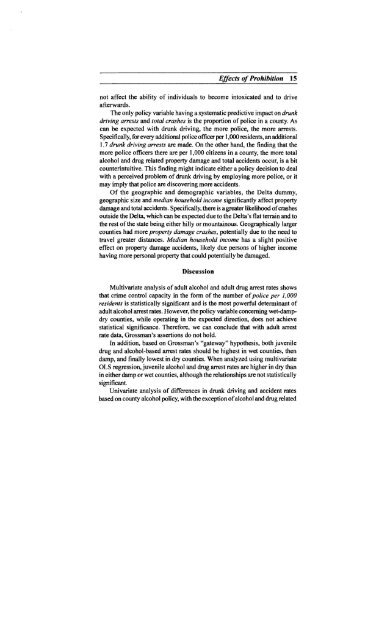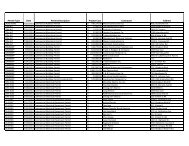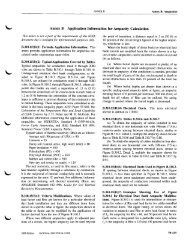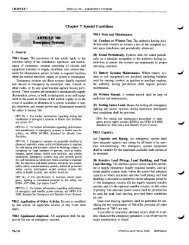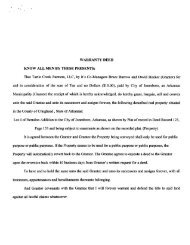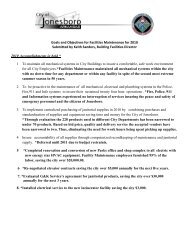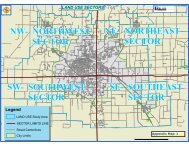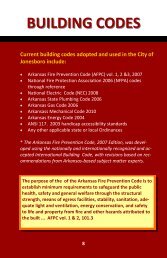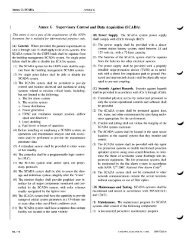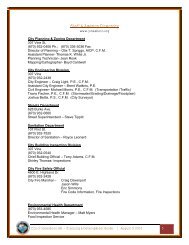Opposition material - City Clerk - City of Jonesboro
Opposition material - City Clerk - City of Jonesboro
Opposition material - City Clerk - City of Jonesboro
Create successful ePaper yourself
Turn your PDF publications into a flip-book with our unique Google optimized e-Paper software.
Effects <strong>of</strong>Prohibition 15<br />
not affect the ability <strong>of</strong> individuals to become intoxicated and to drive<br />
afterwards.<br />
The only policy variable having a systematic predictive impact on drunk<br />
driving arrests and total crashes is the proportion <strong>of</strong> police in a county. As<br />
can be expected with drunk driving, the more police, the more arrests.<br />
Specifically, for every additional police <strong>of</strong>ficer per 1,000 residents, an additional<br />
1.7 drunk driving arrests are made. On the other hand, the finding that the<br />
more police <strong>of</strong>ficers there are per 1,000 citizens in a county, the more total<br />
alcohol and drug related property damage and total accidents occur, is a bit<br />
counterintuitive. This finding might indicate either a policy decision to deal<br />
with a perceived problem <strong>of</strong> drunk driving by employing more police, or it<br />
may imply that police are discovering more accidents.<br />
Of the geographic and demographic variables, the Delta dummy,<br />
geographic size and median household income significantly affect property<br />
damage and total accidents. Specifically, there is a greater likelihood <strong>of</strong>crashes<br />
outside the Delta, which can be expected due to the Delta's flat terrain and to<br />
the rest <strong>of</strong>the state being either hilly or mountainous. Geographically larger<br />
counties had more property damage crashes, potentially due to the need to<br />
travel greater distances. Median household income has a slight positive<br />
effect on property damage accidents, likely due persons <strong>of</strong> higher income<br />
having more personal property that could potentially be damaged.<br />
Dis~ussioD<br />
Multivariate analysis <strong>of</strong> adult alcohol and adult drug arrest rates shows<br />
that crime control capacity in the fonn <strong>of</strong> the number <strong>of</strong>police per J.OOO<br />
residents is statistically significant and is the most powerful detenninant <strong>of</strong><br />
adult alcohol arrest rates. However, the policy variable concerning wet-dampdry<br />
counties, while operating in the expected direction, does not achieve<br />
statistical significance. Therefore, we can conclude that with adult arrest<br />
rate data, Grossman's assertions do not hold.<br />
In addition, based on Grossman's "gateway" hypothesis, both juvenile<br />
drug and alcohol-based arrest rates should be highest in wet counties, then<br />
damp, and finally lowest in dry counties. When analyzed using multivariate<br />
OLS regression, juvenile alcohol and drug arrest rates are higher in dry than<br />
in either damp or wet counties, although the relationships are not statistically<br />
significant.<br />
Univariate analysis <strong>of</strong> differences in drunk driving and accident rates<br />
based on county alcohol policy, with the exception <strong>of</strong>alcohol and drug related


